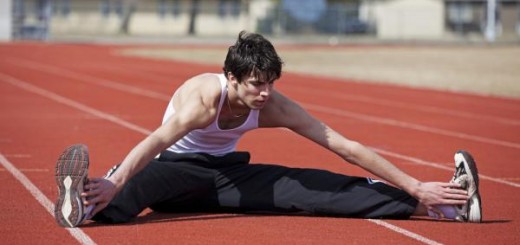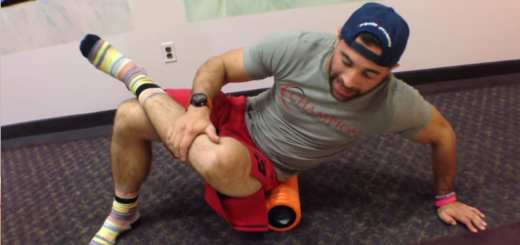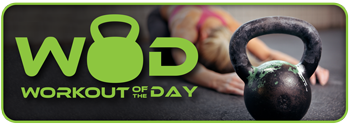How Your Posture At Work is Destroying Your Gains
In our previous posting we talked about how sitting is the new smoking; that if you workout for 1 hour a day, that’s only (1/24) = 4.17% of your day. So why let your work day sabotage your results. If you are slouching right now as your read this – sit up.
HOW YOU’RE SABOTAGING YOUR POSTURE AND YOUR TIME IN THE GYM
 Good posture means maintaining correct alignment of your body in a seated position, while standing, and during motion.Most athletes and active people pay attention to posture during exercise, but after a few minutes at the desk we start to slump. Being able to maintain good posture is a combination of flexibility, strength, endurance, and awareness. Most people have the ability to achieve proper alignment, however in just seconds they can start to lose their alignment. This can be due to an issue with any of the aforementioned reasons.
Good posture means maintaining correct alignment of your body in a seated position, while standing, and during motion.Most athletes and active people pay attention to posture during exercise, but after a few minutes at the desk we start to slump. Being able to maintain good posture is a combination of flexibility, strength, endurance, and awareness. Most people have the ability to achieve proper alignment, however in just seconds they can start to lose their alignment. This can be due to an issue with any of the aforementioned reasons.
Challenge: Try to maintain good posture sitting up tall during the rest of this article!
Posture is both static and dynamic, yet we must practice good posture in the gym but also at home. Attempting great posture during lifts will not always translate over to good posture sitting or even standing. It is a combination of the numbers game. Meaning, the average person spends roughly seven hours a day sitting at work, then add in driving time, meals, watching TV, and other activities. This can translate into over twelve hours a day sitting. No amount of good posture while lifting for the hour or two you work out can make up for the sheer amount of time spent in poor position while sitting.
Begin by evaluating your sitting posture. Both your hips and knees should have roughly a 90-degree bend in them with your torso upright. It should look like you were doing a wall sit. Think about your head against the wall and not reaching forward to see the computer or your book better. Your work surface should have you looking at eye level up to 25 degrees below eye level. Anything below this predisposes you to cervical spine curvature forward, also a frontal collapse of the thoracic spine.
 Lumbar support if used correctly can support posture. If used incorrectly, lumbar support allows you to comfortably sit in poor position with no core engagement to hold your upper half. This bad habit reinforces poor posture and can create issues when trying to recruit core musculature during exercise.
Lumbar support if used correctly can support posture. If used incorrectly, lumbar support allows you to comfortably sit in poor position with no core engagement to hold your upper half. This bad habit reinforces poor posture and can create issues when trying to recruit core musculature during exercise.
When you have good posture sitting or standing you should be as tall as possible. Standing posture means your ears should be in line with your shoulders, in line with your hips, and over top of your knees and ankles. You should feel tall and stand neutral shoulders, not letting them roll forward. The most common issues with standing posture are lack of core tension and sitting on the hip girdle instead of standing tall – that means with a relaxed stomach and butt sticking out. That’s a bad position for your spine. The position has no ability to transfer force effectively and makes the spine vulnerable to injury.
Positioning in exercise is critical to force output, energy conservation, and safety. An athlete in a good position is resilient and tends to remain injury free. The body is meant to move large loads and have great endurance. Poor positioning and posture not only require additional energy but also strain the body in unnatural ways and directly correlates to higher injury rates.
Also, take this nugget with you. You work out for an hour at the gym, then shower, eat, and head to work. You’ve passed the sixty-minute threshold so your body has absorbed a majority of the nutrients it’s going to from your meal. It starts to regenerate and heal. If you have poor posture with shoulders forward, a curve in your spine, and collapsed hips, your body is literally healing the micro-tears and micro-trauma into this poor position. You are actually healing in a shortened muscular state that remains static, slowly solidifying the new connections your body is making
 This should ring true to you if you have chronic mobility and flexibility issues. You may stretch all day, mobilize, and foam roll before your overhead squats. After this you feel pretty good during your sets, but the next time you go to squat you have to repeat this whole extended process. What your goal should be is to change your baseline movement and mobility. Then when you go to resume your exercise you simply have to warm up and hit it, not spending thirty minutes to open up. This will translate to better health and posture during the entire rest of the day. Pay attention to posture during all of the times you are not at the gym and it will pay dividends.
This should ring true to you if you have chronic mobility and flexibility issues. You may stretch all day, mobilize, and foam roll before your overhead squats. After this you feel pretty good during your sets, but the next time you go to squat you have to repeat this whole extended process. What your goal should be is to change your baseline movement and mobility. Then when you go to resume your exercise you simply have to warm up and hit it, not spending thirty minutes to open up. This will translate to better health and posture during the entire rest of the day. Pay attention to posture during all of the times you are not at the gym and it will pay dividends.
Working on your posture may mean adjusting your workspace, investing in different furniture, and spending time to develop new habits. Think of it as a startup cost to the future of your own health and performance. It will take more time and money in the short run but should save you from injury and years of pain in the long run.
Challenge Check-In: Did you maintain that posture during the entire article or have you started to lose it?
Original Article by: Jeff Kuhland at breakingmuscle.com





